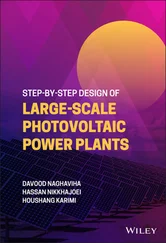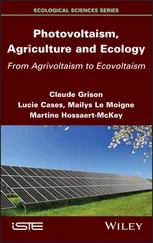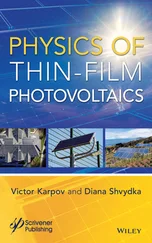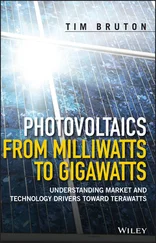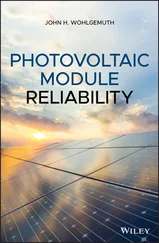I hope, you, the reader, will find this book helpful in designing and understanding your IPV system.
Monika Freunek Müller
Bern, Switzerland, August 2020
1Will Photovoltaics Stay Out of the Shadows?
Joseph A. Paradiso
MIT Media Lab, Cambridge, Massachusetts, USA
AbstractAdvances in ultra-low-power electronics capable of useful applications have caused interest in energy harvesting to balloon in recent years. When needed power drops to the point where harvesting is feasible, however, an embedded battery presents serious competition for many use cases, and the particulars tend to rapidly become niche-driven, as they depend on the ambient energy environment that the system experiences. Photovoltaics have long been a popular energy harvesting option, and recent developments expand their opportunities for low-light indoor applications.
Keywords:Indoor photovoltaics, energy scavenging, low-power electronics, human-powered systems, Internet of Things
I’m going to start this book introduction with a confession. Although I’m known for developing a variety of energy harvesting approaches and implementations dating back a couple of decades now, I’ve never actually really used any of them. Yes, we and others back then and since [1–4] siphoned parasitic power from various modes of human motion and activity – for example, from footfalls alone, my students and I made compact shoe-mounted piezo harvesters in the late 1990s that sent radio transmissions and shoe-integrated magnetic generators that could power a music system with loudspeakers [5, 6]. Others since have done more evolved work in siphoning power from the foot [e.g., 7, 8], and even products or online DIY projects have appeared [e.g., 9–11], but nothing has hit even close to the mainstream or for that matter even established a strong niche market. The dream of capturing energy from human motion is an opium to the public that hearkens to the appealing magic of perpetual motion machines since there is an eagerness to see this kind of invention. But when the rubber meets the road, even though ingenious implementations have been designed, nothing has gained much traction.
This is for a variety of reasons. One is physical; living bodies are evolved to conserve their energy—our tendons act as springs while walking to store and release ambulant power, and our vascular system constricts to avoid excessive heat loss. Hence, pulling significant power from moving or walking can become tiring, and large-area thermoelectrics can feel cold. Another is expense and complication. Building harvesters into shoes, where most tappable human energy resides, can get pricey and can interfere with footwear designs that are already finely optimized for their purpose (walking, running, climbing, etc.). The complication involved in large mechanical harvesters also introduces fragility; again, going back to the shoe, such devices always break there well before the shoe is worn out. Then there is the issue of power distribution; without wiring the body or clothing, the energy needs to be used where it is harvested. Although you can perhaps glean a good fraction of a Watt from a shoe, it’s hard to use it there; the power needs to be transported to a smart AR headset, for example, where that level of energy would be welcomed (ditto for pretty much any kind of mechanical harvester—you need to tap limb motion or the inertial reaction of a heavy mass in a backpack [12] to get to this power level). Sure, you could charge a battery in your shoe and move it—people have implemented this several times. But even with multiple wearable devices, the convenience of powerline charging them, at least in the wired world, has well outpaced this strategy.
OK, so let me backpedal a little from my leading sentence. There is one energy harvesting technology that I have used in my work routinely, and that’s photovoltaics. Energy harvesting, by its nature, is a nichey opportunity. Different kinds of harvesting suit environments with different energy reservoirs subject to the constraints of the application and attached device (e.g., energy levels required/available, the conversion efficiency at that energy, and allowable area/volume/mass for the harvesting technology). If your device is buried inside a wall, in a closed shipping box, or embedded in the human body, for example, there is no light available, and then perhaps, if the expense is warranted, thermal conversion (on a warm/hot steampipe, for example) is used [13], or mechanical harvesting (if there’s a lot of vibration, ideally at a higher frequency as in an engine) [14], and RF harvesting of beamed or ambient radio with a backscatter tag can work for very low power applications [15]. Within the body, power is generally proximately inductively coupled from transmitting coils on the skin, but ongoing work looks to harvest small amounts through adaptive RF beamforming [16], vibrational scavenging via inertial reaction and induced strain (including on the heart—an idea with a long legacy [17] but only now nearing implementation [18]) and using the body’s own energy transport mechanisms via implantable biofuel cells [19]. But in most places where people spend time, there is light by default, as we need it to see, and here photovoltaics are often a top choice if energy harvesting is mandated.
Solar cells offer a harvesting mechanism that has been applied across many orders of magnitude of scale and plant capacity, from urban power systems to spacecraft to mm-scale “smart dust” [20] stacked IC dies gestating in research labs that glean power from a top silicon layer with a micro embedded solar array that also doubles as a coarse video sensor [21]. Photoelectric conversion technology has developed enormously since Einstein won the Nobel Prize in part for explaining it a century ago, thus playing his role (to his purported later chagrin) in ushering in the dawn of quantum mechanics. They have gone through decades of laborious development, enabled through (and likewise inspiring) advances in materials, power conversion and energy storage. Indeed, they will play a major role in renewable energy, together with safe, economical nuclear power and within a few decades fusion reactors designed either by humans or the AIs that will augment us by then. The market and societal need for large-scale solar power is now clear, and has driven the technology and manufacturing into a variety of performance achievements with different form factors while lowering the cost. Thanks to Elon Musk, one notable player out of many in this field, I can now tile my roof with aesthetically-appealing solar shingles and power my Tesla electric car significantly off-grid, even with the available solar illumination up here in New England. The world is now lacking only in political will to buck economic inertia and transition to an emission-free/renewable energy basis in which the capture and harnessing of incident solar photons will be a major part.
That, of course, is the topic of many other books. But the broad, recent expansion of photovoltaics and associated research has also driven the lower end, making light conversion increasingly feasible for low-power embedded applications. Already as a child growing up in the 1960s, I delighted in buying the cheap selenium solar cells they used to sell at the Radio Shack (the dominant electronics component chain store in the US that enabled generations of fellow DIY-ers before it recently went out of business) and hooking them up to small motors, etc., to see them work with a little bit of daylight. With decades of subsequent improvement, solar cells became cheaper and better—certainly at the microwatt level, if you could afford the surface area for some cm’s worth of cell area, they have powered simple LCD calculators with indoor light since the 1980s, and watches have even hidden tiny solar arrays in their face—we were proud back then to show off these versions of common gadgets that never needed batteries replaced. But they stayed nichey, as in those days there wasn’t much you could do when constrained to microwatts.
Читать дальше





